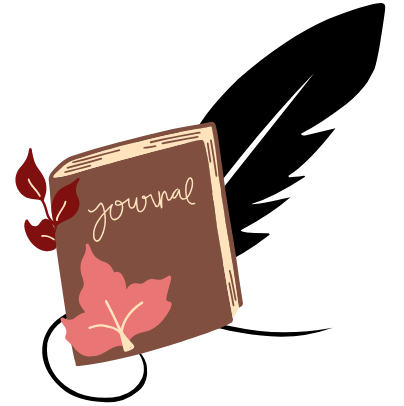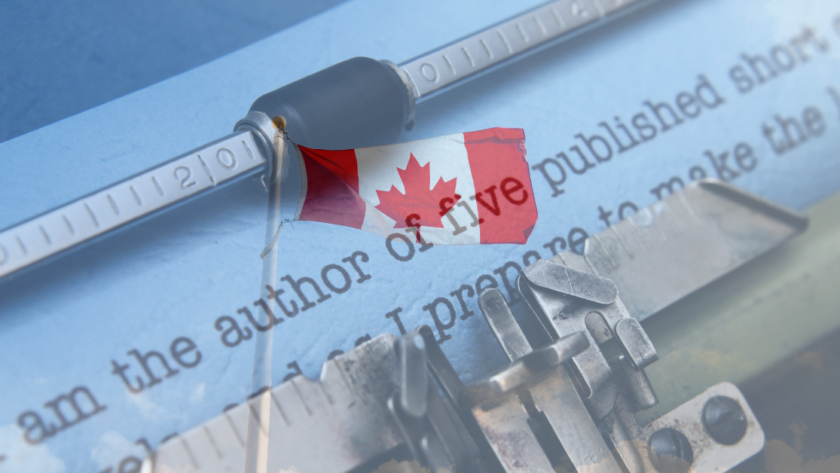Canada’s literary landscape is large and diverse, mirroring the country’s expansive geography and multicultural population.
From the rugged Atlantic coastline to the misty Pacific shores, Canadian authors have been crafting stories that capture the essence of our national spirit for generations.
The voices emerging from our northern climes are as varied as they are powerful, each one contributing a unique thread to the mixture of our cultural identity.
Let’s explore the heart of Canadian literature, examining the titans who’ve shaped our literary landscape and the emerging voices who are redefining it for a new generation.
The Foundations of CanLit: Pioneers and Trailblazers
Canadian literature developed gradually, built on the efforts of pioneers who dared to tell our stories when the world wasn’t quite ready to listen.
The Early Voices
In it’s infancy, Canadian literature largely extended British and French traditions. Writers like Susanna Moodie and Catharine Parr Traill documented the harsh realities of settler life in Upper Canada, laying the groundwork for a distinctly Canadian voice.
Susanna Moodie’s “Roughing It in the Bush” (1852) provided a vivid account of the challenges faced by British immigrants in the Canadian wilderness.
Her sister, Catharine Parr Traill, wrote “The Backwoods of Canada” (1836), offering practical advice for newcomers while celebrating the natural beauty of her adopted home.
These early works, while still heavily influenced by European sensibilities, began to capture the unique experiences of life in Canada. They set the stage for a literary tradition that would eventually come into it’s own.
The early 20th century marked a turning point for Canadian literature. Stephen Leacock’s “Sunshine Sketches of a Little Town” (1912) used humor to capture the essence of small-town Canadian life.
Leacock’s witty observations and affectionate portrayal of fictional Mariposa (based on Orillia, Ontario) resonated with readers and critics alike, proving that Canadian stories could have universal appeal.
The CanLit Boom
The 1960s and 70s saw an explosion of Canadian literary talent. This period, often referred to as the “CanLit Boom,” gave rise to some of our most celebrated authors:
Margaret Atwood
Margaret Atwood’s dystopian novel “The Handmaid’s Tale” has become a global phenomenon, but her body of work spans genres and decades, always with a keen eye on Canadian identity and feminist themes.
Atwood’s ability to blend speculative fiction with astute social commentary has made her one of Canada’s most internationally recognized authors.
Her novel “Surfacing” (1972) explores themes of national and personal identity against the backdrop of the Quebec wilderness.
Through her protagonist’s journey, Atwood looks at the complexities of Canadian-American relations and the search for an authentic Canadian voice.
Alice Munro
Alice Munro, the master of the short story, earned the Nobel Prize in Literature in 2013 for her nuanced portrayals of small-town Ontario life.
Munro’s stories, often set in Huron County, Ontario, explore the depths of human relationships and the quiet dramas of everyday life.
Collections like “Dance of the Happy Shades” (1968) and “Who Do You Think You Are?” (1978) showcase Munro’s ability to find profound truths in seemingly ordinary lives.
Her precise prose and psychological insight have earned her comparisons to Anton Chekhov and solidified her place as one of Canada’s greatest literary exports.
Mordecai Richler
With biting wit and unflinching honesty, Mordecai Richler’s novels captured the Jewish experience in Montreal.
“The Apprenticeship of Duddy Kravitz” (1959) stays a classic of Canadian literature, following the ambitious and morally ambiguous Duddy as he strives for success in mid-20th century Montreal.
Richler’s work often courted controversy, tackling issues of cultural identity, assimilation, and the tensions between English and French Canada.
His satirical eye and sharp prose made him a unique voice in Canadian literature, unafraid to challenge societal norms and expectations.
Robertson Davies
Robertson Davies’ Deptford Trilogy explored the complexities of Canadian society through a lens of magic realism and psychological depth.
Beginning with “Fifth Business” (1970), Davies wove a rich mixture of small-town Ontario life, incorporating elements of Jungian psychology, hagiography, and Canadian history.
Davies’ work helped elevate Canadian literature on the world stage, demonstrating that our stories could be both intellectually rigorous and wildly entertaining.
His exploration of the Canadian psyche, with it’s mix of Old World influences and New World aspirations, stays a touchstone for understanding our national character.
These authors didn’t simply write great books – they helped define what it meant to be Canadian in a rapidly changing world.
Their work grappled with questions of identity, place, and belonging, themes that continue to resonate in Canadian literature today.
The Multicultural Mosaic: Diverse Voices in CanLit
As Canada embraced multiculturalism in the latter half of the 20th century, our literature began to reflect the diverse experiences of immigrants and their descendants.
This shift brought new perspectives and storytelling traditions to Canadian literature, enriching our national narrative.
Voices from the Diaspora
Michael Ondaatje
Born in Sri Lanka, Michael Ondaatje’s lyrical prose in works like “The English Patient” explores themes of identity and memory. Ondaatje’s writing often blurs the lines between poetry and prose, creating a unique style that captures the fragmented nature of immigrant experiences.
“In the Skin of a Lion” (1987) tells the story of Toronto’s immigrant workers in the early 20th century, weaving together historical fact and imaginative fiction. Ondaatje’s work challenges traditional notions of Canadian identity, highlighting the contributions of those often overlooked in official histories.
Rohinton Mistry
Rohinton Mistry’s novels, including “A Fine Balance,” offer a poignant look at Indian society while reflecting on the immigrant experience in Canada.
Mistry’s work often deals with the complexities of cultural dislocation and the struggle to maintain your identity in a new land.
“Such a Long Journey” (1991) explores the political and social upheavals of 1970s India through the eyes of a Parsi bank clerk.
While set primarily in Mumbai, the novel touches on themes of exile and belonging that resonate with many Canadian immigrants.
Wayson Choy
Wayson Choy’s “The Jade Peony” provides a vivid portrayal of Vancouver’s Chinatown in the 1930s and 40s. Through the eyes of three siblings, Choy explores the tensions between traditional Chinese culture and the pressures of assimilation in Canadian society.
Choy’s work sheds light on a often-overlooked aspect of Canadian history, bringing to life the experiences of Chinese-Canadians during a time of significant discrimination and hardship. His nuanced portrayal of family dynamics and cultural conflict has made “The Jade Peony” a staple of Canadian literature courses.
These authors and many others have expanded the definition of Canadian literature, bringing global perspectives to our national narrative.
Their work challenges the notion of a monolithic Canadian identity, instead presenting a complex, multifaceted view of what it means to be Canadian in the modern world.
Indigenous Voices: Reclaiming the Narrative
One of the most significant developments in recent Canadian literature has been the rise of Indigenous authors reclaiming their stories and challenging colonial narratives.
These writers are preserving traditional storytelling methods and addressing contemporary issues facing Indigenous communities.
Storytellers and Truth-tellers
Thomas King
Thomas King’s blend of humor and sharp social commentary in works like “Green Grass, Running Water” has made him one of Canada’s most beloved authors.
King, of Cherokee and Greek descent, often uses traditional storytelling techniques to explore the complexities of Indigenous life in contemporary North America.
“The Inconvenient Indian: A Curious Account of Native People in North America” (2012) combines historical research with personal anecdotes to challenge popular misconceptions about Indigenous peoples.
King’s ability to tackle serious subjects with wit and warmth has made his work accessible to a wide audience while still delivering powerful messages about colonialism and cultural survival.
Eden Robinson
Eden Robinson, a Haisla and Heiltsuk novelist, combines traditional storytelling with contemporary issues facing Indigenous youth in her work.
Her novel “Monkey Beach” (2000) blends supernatural elements from Haisla tradition with a coming-of-age story set in Kitamaat, British Columbia.
Robinson’s “Trickster” trilogy, beginning with “Son of a Trickster” (2017), updates the traditional figure of the trickster for a modern audience. Through her protagonist Jared’s struggles with family, identity, and supernatural abilities, Robinson explores the challenges faced by Indigenous youth straddling traditional and contemporary worlds.
Tomson Highway
Playwright and novelist Tomson Highway’s work often explores the intersection of Indigenous and Western cultures. His play “The Rez Sisters” (1986) brought the experiences of seven women on a northern Ontario reserve to mainstream Canadian theater, combining humor, tragedy, and Cree mythology.
Highway’s novel “Kiss of the Fur Queen” (1998) draws on his own experiences in residential schools to tell the story of two Cree brothers navigating the trauma of cultural dislocation and sexual abuse. Their work is essential reading for anyone seeking to understand the full breadth of Canadian literature and the ongoing process of reconciliation in our country.
The New Guard: Contemporary Canadian Authors
While we celebrate our literary giants, a new generation of Canadian authors is making waves both at home and abroad. These writers are tackling global issues while maintaining a distinctly Canadian perspective, pushing the boundaries of what Canadian literature can be.
Rising Stars
Esi Edugyan
Esi Edugyan’s novels “Half-Blood Blues” and “Washington Black” have both won the Scotiabank Giller Prize, exploring themes of race, identity, and history.
Edugyan’s work often takes readers beyond Canadian borders, examining the Black experience across different historical periods and geographical locations.
“Washington Black” (2018) follows the adventures of a young enslaved boy who becomes the assistant to an eccentric inventor.
Through this lens, Edugyan explores themes of freedom, scientific discovery, and the lasting impacts of slavery.
Her ability to blend historical research with compelling storytelling has earned her international acclaim.
Madeleine Thien
Madeleine Thien’s “Do Not Say We Have Nothing” won the Governor General’s Award and was shortlisted for the Man Booker Prize, cementing her place as a major literary talent. The novel spans generations, from Mao’s Cultural Revolution to the 1989 Tiananmen Square protests, exploring the impact of political upheaval on person lives.
Thien’s work often deals with themes of memory, music, and the ways in which historical trauma reverberates through generations. Her nuanced portrayal of Chinese and Chinese-Canadian experiences adds depth to our understanding of Canada’s multicultural landscape.
Rupi Kaur
Instagram poet Rupi Kaur has taken the world by storm, bringing poetry to a new generation of readers. Her collections “milk and honey” and “the sun and her flowers” have sold millions of copies worldwide, addressing themes of femininity, love, loss, and healing.
While some critics have dismissed Kaur’s work as overly simplistic, her impact on contemporary poetry and publishing is undeniable. Her success has opened doors for other young poets, particularly women of color, to share their voices on a global stage.
These authors and many others are pushing the boundaries of what Canadian literature can be, tackling global issues while maintaining a distinctly Canadian perspective. Their work reflects the increasingly interconnected nature of our world while still grappling with questions of identity and belonging that have long been central to Canadian literature.
Challenges and Controversies in Canadian Literature
Like any vibrant literary scene, Canadian literature has faced it’s share of challenges and controversies. These debates reflect broader societal issues and highlight the ongoing evolution of our literary landscape.
Cultural Appropriation and Representation
The debate over who has the right to tell certain stories has been particularly heated in Canada. The controversy surrounding Joseph Boyden’s Indigenous ancestry highlighted the complexities of identity and authenticity in storytelling.
Boyden, author of acclaimed novels like “Three Day Road” and “The Orenda,” faced scrutiny over his claims to Indigenous heritage.
This controversy sparked wider discussions about the responsibilities of authors when writing about cultures other than their own and the importance of amplifying authentic Indigenous voices in Canadian literature.
These debates have led to increased awareness of the need for sensitivity readers and more diverse voices in publishing.
While the issue stays complex, many in the Canadian literary community are working towards more inclusive and respectful representation in our literature.
Gender and Diversity in Publishing
Despite the prominence of female authors like Atwood and Munro, gender disparity in literary awards and publishing stays an issue. Organizations like the Writers’ Trust of Canada have taken steps to address this, but there’s still work to be done.
A 2019 study by Canadian Women in the Literary Arts (CWILA) found that while women authors were well-represented in terms of books published, they received significantly less coverage in literary reviews. This disparity in critical attention can have long-term impacts on an author’s career and the canonization of their work.
Efforts to address these imbalances include the creation of awards specifically for underrepresented groups, such as the Indigenous Voices Awards and the Dayne Ogilvie Prize for LGBTQ+ emerging writers. However, many argue that more systemic changes are needed to confirm true equity in Canadian publishing.
The Impact of Digital Technology
The rise of e-books and self-publishing has transformed the literary landscape, offering new opportunities for authors and challenging traditional publishing models.
While this democratization of publishing has allowed more diverse voices to reach readers, it has also raised concerns about quality control and the financial sustainability of writing as a profession.
Social media platforms have become important tools for authors to connect with readers and promote their work.
However, the pressure to maintain an online presence can be challenging for some writers, and the fast-paced nature of social media doesn’t always align with the slow, contemplative process of literary creation.
As the industry continues to evolve, finding a balance between embracing new technologies and preserving the traditional strengths of Canadian literature stays an ongoing challenge.
Nurturing the Next Generation of Canadian Writers
As we look to the future of Canadian literature, it’s crucial to support emerging talent and create spaces for diverse voices to be heard. Various institutions and initiatives play a vital role in fostering new literary talent and ensuring the continued vitality of Canadian writing.
Literary Festivals and Awards
Events like the Toronto International Festival of Authors and the Scotiabank Giller Prize play a vital role in promoting Canadian literature and introducing readers to new authors.
These festivals and awards celebrate established writers and provide platforms for emerging voices to gain recognition.
The Vancouver Writers Fest, for example, hosts an annual “Incite” reading series that pairs established authors with up-and-coming writers, helping to build bridges between generations of Canadian literary talent.
Similarly, the CBC Short Story Prize has become a launching pad for many new writers, offering both prize money and national exposure to winners.
Writing Programs and Residencies
Universities across Canada offer renowned creative writing programs, while residencies at institutions like the Banff Centre for Arts and Creativity provide invaluable support for emerging writers. These programs offer technical instruction and the opportunity to build networks within the literary community.
The University of British Columbia’s Optional-Residency MFA in Creative Writing, for instance, has produced many successful authors while allowing students to finish their degrees from anywhere in the world. This flexibility has made advanced literary education more accessible to a diverse range of aspiring writers.
Writer-in-residence programs at universities and public libraries across the country provide established authors with time and space to work on their projects while also mentoring emerging writers in the community. These programs help to create a sense of continuity and mentorship within Canadian literature.
Government Support for the Arts
The Canada Council for the Arts continues to provide crucial funding for Canadian writers, helping to confirm that our stories continue to be told. Their grants support person authors and literary magazines, small presses, and other organizations that form the backbone of Canada’s literary ecosystem.
Provincial arts councils also play a vital role in supporting local literary scenes. The Ontario Arts Council, for example, offers grants specifically for Northern Ontario writers, recognizing the unique perspectives and challenges of authors from this region.
While government funding for the arts is always subject to political pressures, there is a growing recognition of the economic as well as cultural value of a thriving literary scene.
Programs like the Public Lending Right, which compensates authors for the presence of their books in public libraries, demonstrate a commitment to supporting writers at various stages of their careers.
Embracing the Future of CanLit
As we navigate the ever-changing landscape of Canadian literature, it’s clear that our stories are more important than ever. In a world grappling with issues of identity, climate change, and social justice, Canadian authors are uniquely positioned to offer perspectives that are both locally rooted and globally relevant.
The future of Canadian literature comes from embracing our diversity, supporting new voices, and continuing to grapple with the complex realities of our national experience.
From the urban centers of Toronto and Vancouver to the remote communities of the North, Canadian writers are telling stories that reflect the full spectrum of life in this large and varied country.
Whether you’re a lifelong CanLit enthusiast or just beginning to explore the rich array of Canadian writing, there’s never been a better time to dive into our national literature.
Pick up a book by a Canadian author, attend a reading at your local bookstore, or try your hand at writing your own Canadian story.
Canadian literature encompasses all of us, sharing our stories and shaping our national narrative together. It’s a living, breathing entity that continues to evolve, challenge, and inspire.
As readers and writers, we all have a role to play in nurturing this vital aspect of our cultural heritage and ensuring that Canadian voices continue to be heard on the world stage.
People Also Asked
Who are considered the “Big Three” of Canadian literature?
Margaret Atwood, Alice Munro, and Michael Ondaatje are often referred to as the “Big Three” of Canadian literature due to their international acclaim and significant contributions to CanLit.
What is the oldest Canadian novel?
“The History of Emily Montague” by Frances Brooke, published in 1769, is considered the first Canadian novel. It was written while Brooke was living in Quebec and offers insights into early colonial life.
Are there any famous Indigenous Canadian authors?
Yes, there are many renowned Indigenous Canadian authors. Some notable names include Thomas King, Eden Robinson, Lee Maracle, Richard Wagamese, and Tomson Highway.
What is the most prestigious literary award in Canada?
The Scotiabank Giller Prize is often considered the most prestigious literary award in Canada. It offers a substantial cash prize and significant boost in book sales and recognition for the winner.
How has Canadian literature changed in recent years?
Canadian literature has become increasingly diverse in recent years, with more voices from various cultural backgrounds, including Indigenous authors, immigrants, and their descendants. There’s also been a growing focus on addressing social issues and exploring Canada’s complex history.
What impact did Margaret Atwood have on Canadian literature?
Margaret Atwood has had an enormous impact on Canadian literature, helping to define CanLit on the world stage. Her work has explored themes of Canadian identity, feminism, and environmental issues, influencing generations of writers.
Are there any famous Canadian poets?
Canada has produced many renowned poets, including Leonard Cohen, Anne Carson, Irving Layton, Al Purdy, and more recently, Rupi Kaur.
What role does French-language literature play in Canada?
French-language literature plays a significant role in Canada, particularly in Quebec. Authors like Gabrielle Roy, Michel Tremblay, and Anne Hébert have made important contributions to both Quebec and Canadian literature as a whole.
How has the digital age affected Canadian publishing?
The digital age has transformed Canadian publishing by offering new platforms for self-publishing and e-books. It has also changed how authors connect with readers through social media and online marketing.
What are some classic Canadian novels everyone should read?
Some classic Canadian novels often recommended include “Anne of Green Gables” by L.M. Montgomery, “The Stone Angel” by Margaret Laurence, “Fifth Business” by Robertson Davies, and “The Handmaid’s Tale” by Margaret Atwood.
Key Takeaways
- Canadian literature has evolved from colonial influences to a distinct and diverse voice on the global stage.
- The CanLit Boom of the 1960s and 70s established many of Canada’s literary giants, including Margaret Atwood and Alice Munro.
- Multicultural and Indigenous voices have greatly enriched and expanded the scope of Canadian literature, challenging traditional narratives.
- A new generation of Canadian authors is tackling global issues while maintaining a uniquely Canadian perspective.
- Despite challenges, Canadian literature continues to thrive, supported by a robust ecosystem of festivals, awards, and government funding.




